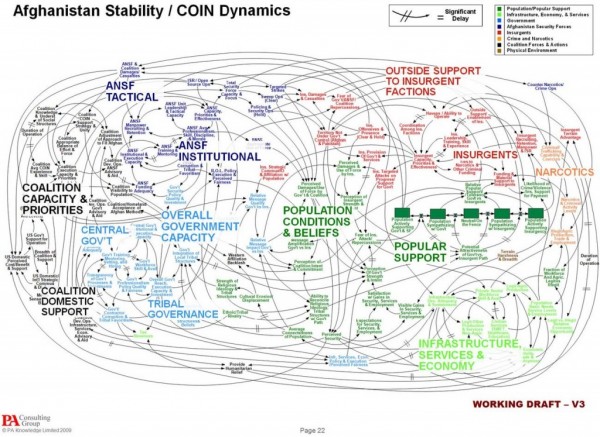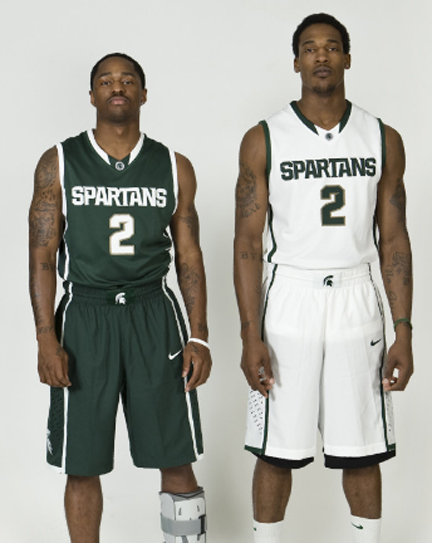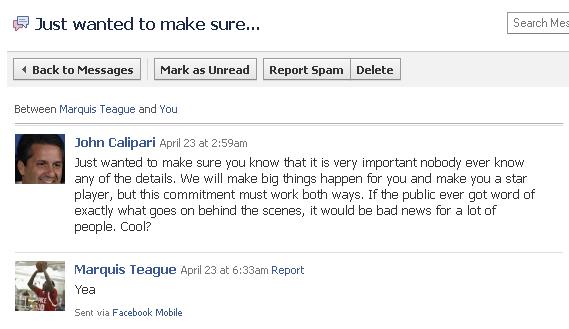Posted by rtmsf on April 27th, 2010
Andrew Murawa is the RTC correspondent for the Pac-10 and Mountain West Conferences and an occasional contributor.
Overview
College sports fans dodged a major bullet last week when the NCAA announced that the men’s basketball tournament would only be expanding to 68 entrants, rather than the 96-team field that had been widely rumored. However, the face of college sports as we know it is still in jeopardy, as the specter of widespread conference realignment still looms, with the much-speculated-upon expansion of the Big Ten as the key domino that could start a wave of changes leaving the college sports landscape drastically altered.
The elephant in the room issue is the consolidation of power away from the existing six BCS conferences and into a smaller number of “superconferences” with the possibility looming that once any realignment sorts itself out and we’ve got four 16-team conferences, those conferences break away from the NCAA and form their own structure. As Kansas athletic director Lew Perkins puts it: “At some time, the major conferences are going to have their own quasi-NCAA. They’re going to do their own thing.” Former Syracuse AD Jake Crouthamel was even more specific, saying that eventually the Big Ten, ACC, SEC and Pac-10 would expand and ultimately leave the NCAA, even to the point of forming their own competing basketball tournament: “If you look at the history of what’s been going on for the last decade, I think it’s leading in that direction.”

We Promise It Won't Get This Complicated
The potential expansion of conferences detailed below is not the first shot fired in the consolidation of power, but the next step in an already-existing series of moves that has widened the financial gap between the biggest athletic departments and the rest of the supporting cast. And, as those at the top get bigger and bigger, the underdogs not only fall behind in terms of funding, but they may ultimately be left completely behind: no more Boise State and Utah to steal BCS bowl spots from big-money institutions during the winter, and no more Butler and George Mason sneaking into the Final Four in the spring. While that type of doomsday scenario is still several decision points down the line, what happens in the Big Ten over the next twelve months or so could be the monumental tipping point to drastically move things in that direction.
At present, the most widely rumored targets for Big Ten expansion are Pittsburgh, Rutgers and Syracuse from the Big East and Nebraska and Missouri from the Big 12, although as always occurs when the Big Ten thinks about expansion, Notre Dame is in the mix and likely their number one choice. With the Pac-10 also in the midst of contemplating expansion within the next year, these moves could send a ripple effect throughout all of the Division I conferences causing some conferences to get bigger, others to contract, and even some to disappear. While the specifics remain conjecture and speculation at this point, there are enough common-sense scenarios out there to fuel theories to create one of the most helter-skelter flowcharts ever seen. We’ll take a look conference-by-conference at what could happen, and what kind of fallout might be created by each move, starting with our eleven midwestern friends.
Big Ten
Big Ten commissioner Jim Delany confirmed last Wednesday that his conference is considering not only expanding to 12, but also perhaps even 14 or 16 teams. While some of the rationale for the expansion would be the addition of a football championship game for more revenue, the accumulation of more content and more markets for the Big Ten Network is probably more important to their plans. Delany noted that while discussions for this expansion are ongoing, the 12-18 month timetable that was originally announced in December is still the current framework.
Starting with the first domino, there is little doubt that the Fighting Irish would be the Big Ten’s first choice and the most logical fit for the conference, in terms of geography, academics and, frankly, football. Notre Dame and the Big Ten have flirted with each other many times in the past, but there is likely a greater chance that they will consummate their relationship this time around than any time before. For the Big Ten, the attraction is obvious: a huge fan base in historic “Big Ten country,” a ton of athletic history, and excellent academics. For Notre Dame, however, the question is a lot tougher. The Irish have been a football independent throughout their history and current athletic director Jack Swarbrick recently said that their “highest priority is maintaining football independence.” Notre Dame is currently in the middle of a television contract with NBC for the rights to broadcast home football games, a contract that runs through 2015 and an issue that will need to be confronted somehow if the Irish are eventually invited and accept Big Ten membership. The amount of the NBC deal (about $15 million annually) is not prohibitive enough to prevent them from considering membership in the Big Ten, whose member schools currently receive about $20 million annually from their television contracts. It is even possible that if the Big Ten and Notre Dame can come to an agreement, all this expansion talk will end right there: Notre Dame joins up, the Big Ten stops at 12 teams, the Big East poaches a team from CUSA like Central Florida as an additional football school and geographic partner to South Florida or a basketball-only school from the A-10 like Rhode Island or Massachusetts and the end-of-the-world scenario is averted. At present, however, it is being reported that Notre Dame is not being considered in the Big Ten’s expansion plans (a report that nobody in their right mind believes), but if Notre Dame is interested, the Big Ten will certainly be interested as well.

Figure 1: Big Ten Best Case Scenario
However, it is also realistic that with or without Notre Dame, the Big Ten is aiming for 14 or 16 teams to become the first superconference. While the addition of teams such as Missouri and Nebraska makes the most geographic sense, this expansion thing is not really about logic but about dollars, and Delany seems most interested in all the potential viewers that the bigger east coast markets present — notably Rutgers and Syracuse, but also Pittsburgh and potentially Connecticut. Adding three or even all four of those schools would effectively kill Big East football as we know it and potentially damage the Big East basketball enough to persuade a fence-sitting Notre Dame to leap off onto the Big Ten side as well. Swarbick himself admitted in March that “there are things that are large enough to challenge our ability to remain independent and remain in the Big East.” All four (or even three) of those flagship Big East programs bolting for the Big Ten could be one of those “large enough” things.
Read the rest of this entry »
| rtc analysis
| Tagged: acc, atlantic 10, big 12, big east, big ten, boise st, boston college, byu, cincinnati, clemson, colorado, connecticut, cusa, florida st, georgetown. syracuse, georgia tech, kansas, louisville, maryland, memphis, miami (fl), missouri, mountain west, nebraska, oklahoma, pac-10, pittsburgh, rutgers, san diego st, sec, south florida, syracuse, texas, unlv, utah, west virginia
Share this story





























![438012310054_Kentucky_v_Arkansas[1]](http://rushthecourt.net/wp-content/uploads/2010/04/438012310054_Kentucky_v_Arkansas1.jpg)



















